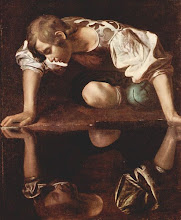
Ovid's next story (in Tony Kline's translation as usual), at the end of Book II, and somewhat cursorily finished off at the beginning of Book III, tells of Europa's abduction by Jupiter. Jupiter fell in love with Europa, a Phoenician princess. He took the form of a white bull and together with a herd of cattle he met the princess while she was playing on the beach. He coaxed her onto his back and splashed about in the shallows, and then headed out to sea with her on his back, taking her to Crete. (Robert Scarth's picture of bull via wikimedia commons, used under creative commons licence 2.5)
This story has inspired an overwhelming number of artists, so I'll divide my exploration of this theme into a number of posts.
Let's start with two works from the 15th century. Bartolomeo Bellano or Vellano sculpted this bronze of Europa and the Bull in the 1480s or 1490s (now in Florence's Museo Nazionale del Bargello but not on their website). Another bronze possibly by Andrea Briosco (aka Il Ricco) is now in Budapest's Szépművészeti Múzeum.
Dürer's 1490 sketch for this subject is now in Vienna's Albertina museum, but again not on their website as far as I can see.

This 1560 picture by Titian is now in Boston's Isabella Stewart Gardner Museum. Veronese painted two versions of Europa and the Bull, the one shown below is in London's National Gallery, the other is in the Doge's palace in Venice.
 (Both illustrations in the public domain, the Titian via wiki commons media, the Veronese via Museum Syndicate.)
(Both illustrations in the public domain, the Titian via wiki commons media, the Veronese via Museum Syndicate.)





No comments:
Post a Comment